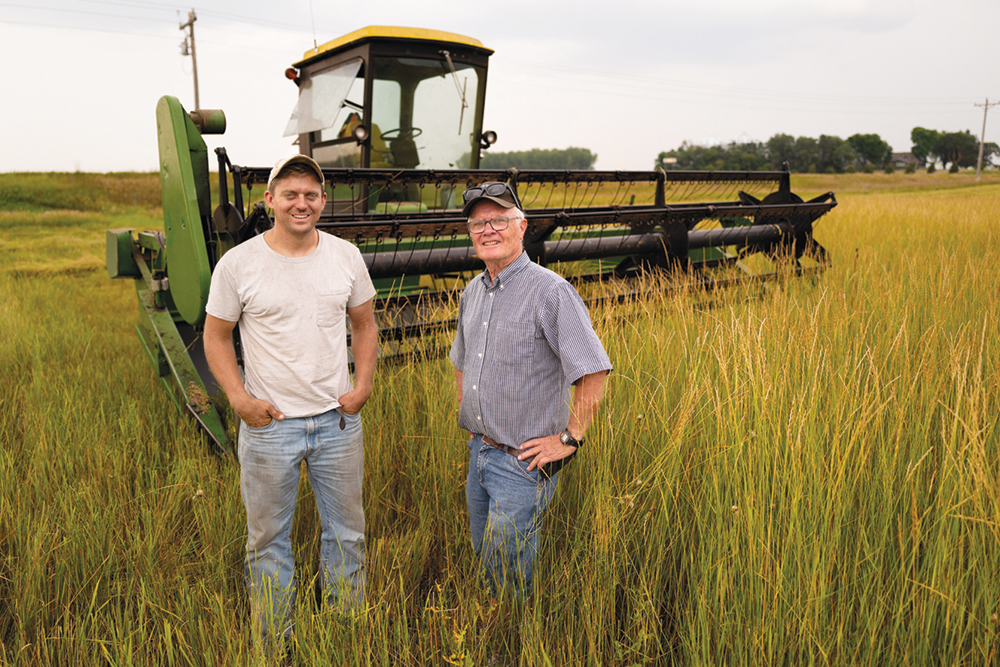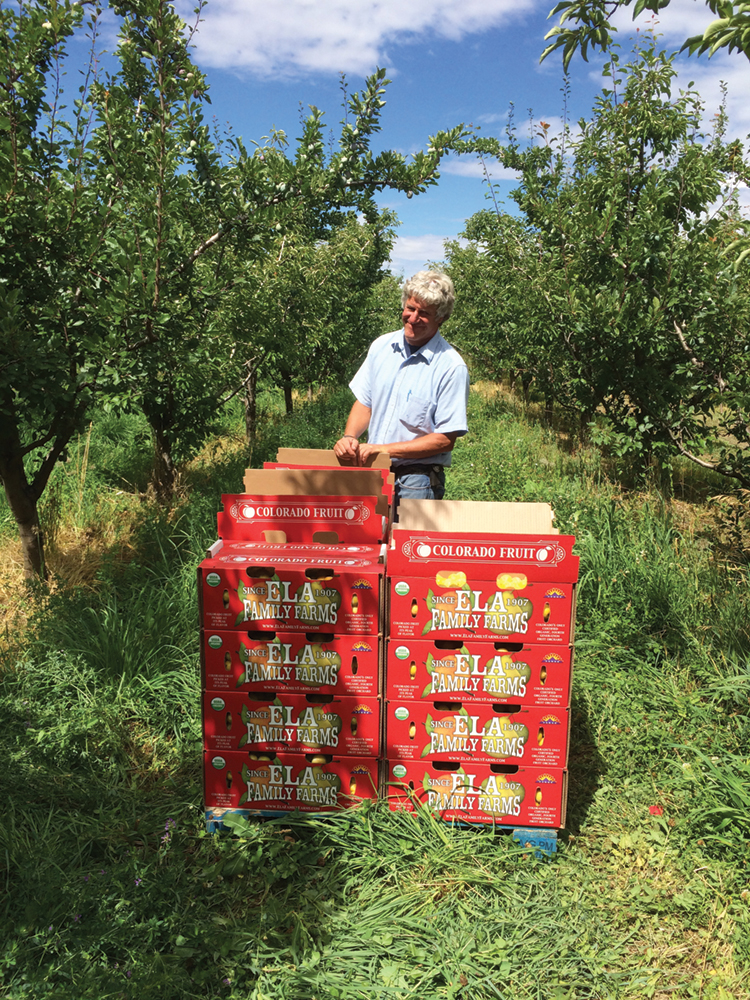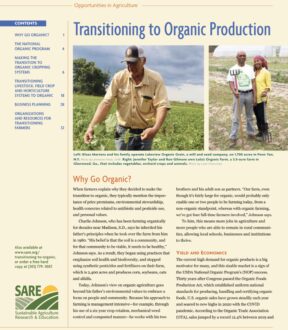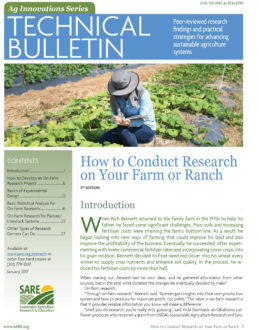As with any type of farming venture, your success with an organic operation will depend on your ability to be a good business manager. To be successful through the transition, you’ll want to be clear about your goals, the strategies that you put in place when making the switch and your ability to manage unexpected challenges as they arise. Farming organically is a shift that requires a willingness and ability to rethink many aspects of your farming system—not only farming practices, but marketing and business planning as well.
Equally important to planning your transitional farming strategies is having a business plan to guide you. The plan should include strategies related to operations, marketing, human resources and finances. It should list the resources you’ll need and how you’ll acquire them. A full, detailed plan will allow you to see if your cash flow is sufficient to get you through a transition now, or if you might need to wait. If your business plan suggests you’re ready, be sure it includes a strong balance sheet to get you through the financial shortfalls that are common to transitioning. Have strategies in place that will account for the possibility of lost revenues during the transition, and consider using free and reduced-cost NRCS programs and/or transition premiums from specific buyers.
Walk through your fields often,” advises Carmen Fernholz, who farms 360 acres of organic small grains, corn and soybeans in Madison, Minn., and who regularly counsels other farmers on organic production. “Take pictures. Take notes often about what you see in the fields or what thoughts go through your mind while on the tractor. This can easily be done with today’s cell phone apps, and it makes excellent reading and reviewing when the snow is flying. It also gets you planning for the next season, especially in decision making about different crops or different equipment you see as needed.”

Be sure your business plan leaves time for recordkeeping, which in organic systems is time consuming. You’ll be required to keep accurate post-certification records on the production, harvesting and handling of any agricultural products sold as organic. Also, do not underestimate the additional time needed to gain new skills, such as managing crop species, controlling weeds mechanically and undertaking new marketing strategies. Organic farming requires preventive rather than prescriptive strategies as well as a considerable amount of planning ahead.
Beyond Profits: Why Do You Want to Transition?
Developing a business plan is also a good opportunity to dig deep and consider why you’re planning to transition to organic. It’s not a decision to take lightly. To gauge your readiness, ask yourself the following:
- Do you enjoy walking your fields and monitoring your animals on a regular basis?
- Can you distinguish pests from beneficial insects?
- Are you curious about why things happen on your farm?
- Can you tolerate a field that isn’t weed free?
- Do you have the patience to trade short-term economic returns for the longer-term resilience that you get from having healthier soils?
- How will the transition period, where yields sometimes decrease and organic prices are not yet available, impact you and your family?
- What resources are available? Consider your access to labor, your borrowing capability, the knowledge base of local Extension professionals and whether there’s local information exchange happening on the topic of organic production.
- How will you develop the new types of relationships required to market organic products?
- Are you going into this strictly for yourself, or are your goals and mission well beyond your farm?
If your only motivation is to improve profits, your likelihood of success may be low; transitioning to organic often requires a huge range of economic, social and production changes. The transition period can be particularly stressful because of the need to develop and implement new management skills. In fact, you should be prepared to survive a short-term financial loss if yields drop and costs increase during this period.
At the same time, some farmers view this transition period as an investment in education and growth. During this period, when you may experience declining profits, consider that you’re learning new skills and networking with new farmers and professionals in ways that can benefit your farm—and you personally—long into the future. You’re also building what economists call “natural capital.” This refers to improved physical characteristics of soil, plants and other natural resources, such as better soil water infiltration, increased microbial populations, more natural predators, and better control of weeds. Like investing in a new stock, you may not see short-term profits, but you’re setting the stage for long-term gains via the sustainability of your land and farm. For example, many of the soil health improvements and biological diversification that we associate with organic agriculture can make farms more resilient to extreme weather events associated with climate change.
Reduce the Cost of Organic Certification
You may be able to get a portion of your certification costs reimbursed through the USDA Farm Service Agency’s Organic Certification Cost Share Program. This program will reimburse 50% of the costs associated with certification up to $500, with eligible costs including application fees and inspection costs. Learn more about eligibility, how to apply and application deadlines at https://www.fsa.usda.gov/organic.
Risk Management and Crop Insurance

On the surface, organic farming may seem to be riskier than the conventional approach: You’re limited to a much smaller range of input materials, are learning a new management system and may be subject to pest and weed outbreaks during the transition period. However, to some extent, the nature of organic farming and its reliance on preventive practices, such as crop rotation, reduces your vulnerability to risk. As diversity on the farm increases, production risks get spread out and market opportunities expand.
This is the view taken by Charlie Johnson, the organic grain farmer from South Dakota. Johnson’s fertility sources include purchased chicken manure, composted livestock manure from his herd, and the legumes in his rotation. This means he’s minimally impacted when input prices change radically. “What my rotation does is it really reduces my risk,” he says. “When fertilizer prices tripled this year [2022] in a lot of cases throughout the country, my chicken manure went from 9 cents a pound to 10 cents a pound. Well, I can live with that.”
This diversification is paramount for economic security in any agriculture production system. Because organic prices can fluctuate, it’s important to plan carefully. A high-value crop will help, but it’s equally important to count on the more modest prices of a variety of crops than on just one high-value crop, as market oversupply at times can decrease the prices of even higher value crops. During transition, increased costs such as re-tooling, purchasing additional equipment, extra storage requirements and additional labor may be substantial. Some organic growers have formed marketing co-ops to share some of those risks. Co-op members share the labor associated with marketing, such as promotion and sales. And by working together on quality control, codification of nutrition and crop genetics, the co-op members gain access to bigger markets. Moreover, this gives each grower more time for their individual operations.
Crop Insurance
The USDA Risk Management Agency (RMA) provides risk management tools and crop insurance coverage on over 100 crops for both organic producers and those transitioning into organic farming practices, and over the years it has expanded the number of acres that are covered by the program. However, many of the organic crop policies are only available in a limited number of counties in the United States. Check with your crop insurance agent about availability of crop insurance protection in your county.
While RMA has steadily increased price and yield coverage for organic and transitional growers, it still has a long way to go. For example, organic growers can get price premium elections for several organic crops, but they rarely reflect actual prices available in many markets.
Organic crop insurance also does not cover pesticide drift from neighboring farms. RMA also doesn’t recognize certain practices or it puts restrictions on how certain farming practices are implemented, such as cover crop termination timing. RMA doesn’t cover crops where interseeding is used to potentially provide fertility and weed control. Check with your crop insurance agent to see if using a farming practice may conflict with crop insurance coverage.
That said, there are plenty of reasons to get crop insurance. For one, you may have a market dip while looking for new buyers. You can also have price volatility. The two most-used insurance programs for organic and transitioning farmers are revenue- and yield-based multiple peril crop insurance (MPCI) and/or whole-farm revenue protection (WFRP).
RMA requires several documents, including:
- Records from the certification agency showing the locations of fields that are transitional, certified organic, buffer zone acreage and non-organic
- Written documentation from a certification agent showing an organic plan
- All records of the types of crops you’re growing, your yields and whether the crop is irrigated or non-irrigated
- Planting dates for crops
Yield loss often impacts revenue during transition. According to Tervor Findlay of the Organic Farming Research Foundation, while crop insurance may not guarantee payment for your yield or revenue losses in all cases, it can help compensate you for insurable losses at a price that reflects the higher prices for transitioning to organic, and it can provide an underlying safety net that mitigates some of the inherent risks of farming.
During your transition to organic, the most useful approach is to use the contract price-addendum option and WFRP. The contract price option allows you to insure a crop at near the price for which you already have a contract. During the transition period, a contract price is more likely to recognize the higher price that products produced during the organic transition may garner. Similarly, WFRP may provide coverage at a level that more accurately reflects the premium for transitioning to organic. After the transition, it’s useful to keep these two options or to accept the organic price election, which allows you to insure your product at closer to the organic market price. Crop insurance benefits are heavily dependent on the agent you use. Make certain that your agent is knowledgeable and fully acquainted with how organic systems fit the policies and regulations they work under.
Transition Strategies: Business Planning and Risk Management
- Read SARE’s Organic Transition: A Business Planner for Farmers, Ranchers and Food Entrepreneurs, which is specifically designed to help you explore a transition from the business side. Read it before you begin transition. The planner is filled with tasks and key business concepts, such as mission statements or strategic planning. It also includes worksheets at the end of each task to help you explore various ideas through important business questions, and develop and test your ideas before you finalize them.
- Use the spreadsheets in the planner to compile current and five-year projected whole-farm income and cash flow, balance sheets, inventory changes and depreciation expenses.
- Read about how other farmers have made the switch at the Tools for Transition Project, hosted at eorganic.info. The project provides online and print materials to help with the business side of transitioning to organic production, including farm transition profiles, whole-farm and enterprise financial analyses, and business planning materials.
- Use other resources such as Farm Performance during the Transition to Organic Production: Analysis and Planning Tools Based on Minnesota Farm Record Data from the University of Minnesota, which provides listings of enterprise costs and returns, as well as whole-farm financial performance measures, from transitioning and recently certified organic farms. It also has crop and dairy enterprise data from farms under conventional, transitional and certified organic management.
- Use the two spreadsheets provided by the Tools for Transition project at eorganic.info, Enterprise and Whole-Farm Analysis Tables and Farm Planning Example.
- Use the Introduction to Crop Insurance for Organic and Transitioning Producers guide from the Organic Farming Research Foundation to familiarize yourself with the types of available insurance.
- The Center for Rural Affairs offers publications and case studies to help organic producers understand the crop insurance options available to them, available at www.cfra.org/crop-insurance-resources.
- Check USDA’s RMA website for the most recent updates about insurance for organic.
- Talk to your local crop insurance agents. The 2018 Farm Bill required additional training on organic for crop insurance agents, so they should be a helpful resource.

